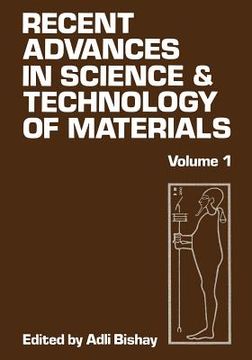Share
Recent Advances in Science and Technology of Materials: Volume 1 (in English)
Bishay, Adlai (Author)
·
Springer
· Paperback
Recent Advances in Science and Technology of Materials: Volume 1 (in English) - Bishay, Adlai
$ 52.09
$ 54.99
You save: $ 2.90
Choose the list to add your product or create one New List
✓ Product added successfully to the Wishlist.
Go to My WishlistsIt will be shipped from our warehouse between
Monday, July 08 and
Tuesday, July 09.
You will receive it anywhere in United States between 1 and 3 business days after shipment.
Synopsis "Recent Advances in Science and Technology of Materials: Volume 1 (in English)"
If an ion in a crystal is replaced by an impurity ion with a different charge, compensation for the charge difference must be accomplished. This is usually done by an intrinsic defect, i. e. a lattice vacancy or interstitial host ion, in such a way to balance the excess or deficit of charge. The introduction of cation vacan- cies along with divalent cation impurities in alkali halides is a familiar example. If these crystals are carefully annealed, nearly all of the compensating defects migrate to the impurity ions to form impurity-defect complexes. It is the behavior of these complexes that are the principal concern in this paper. Almost invariably such complexes are dipolar in character, and when subjected to an electric or mechanical stress field, they will tend to realign to an orienta- tion of lower energy provided the thermal activation is sufficiently great. If the complex consists of an impurity-vacancy couple, re- orientation may occur either by the vacancy moving around the impu- rity or by an exchange of positions of the partners. In general the activation energy for these two distinct reorientation paths is different. If the complex consists of an impurity-interstitial couple, interchange of positions is unlikely and reorientation is considered to occur exclusively by the motion of the interstitial around the vacancy.
- 0% (0)
- 0% (0)
- 0% (0)
- 0% (0)
- 0% (0)
All books in our catalog are Original.
The book is written in English.
The binding of this edition is Paperback.
✓ Producto agregado correctamente al carro, Ir a Pagar.

